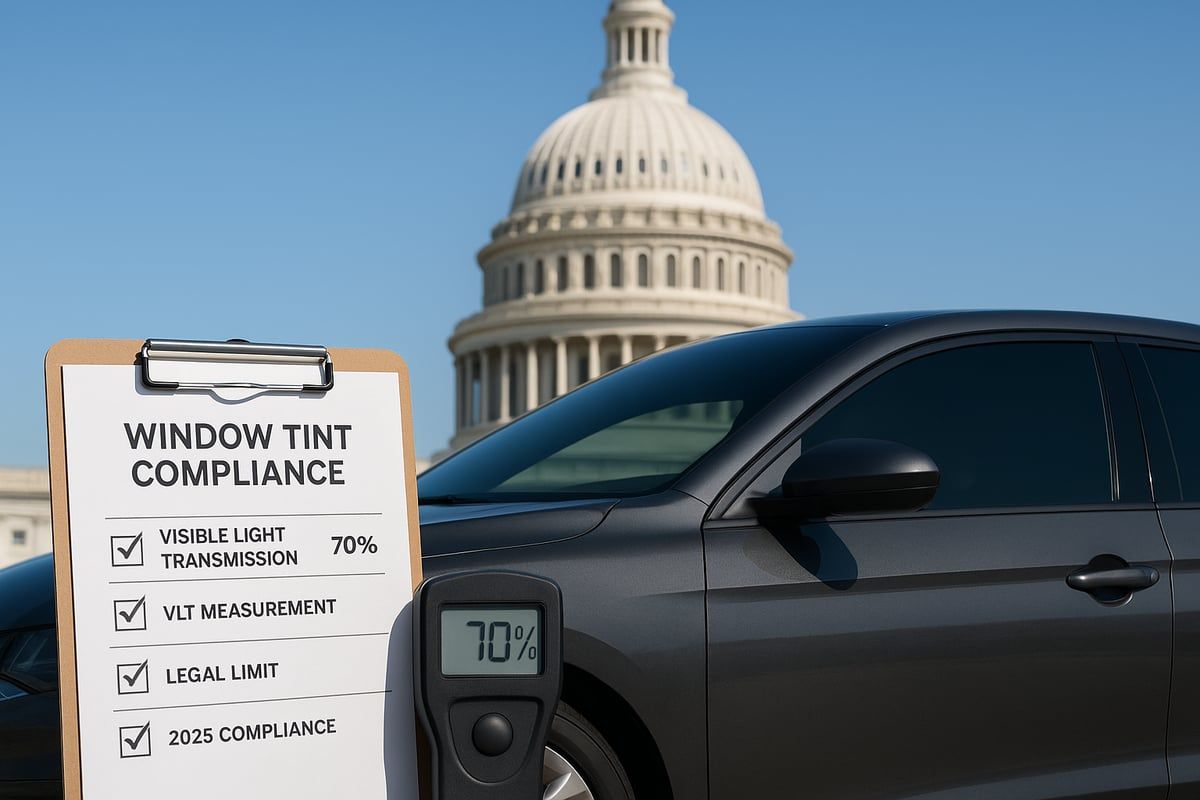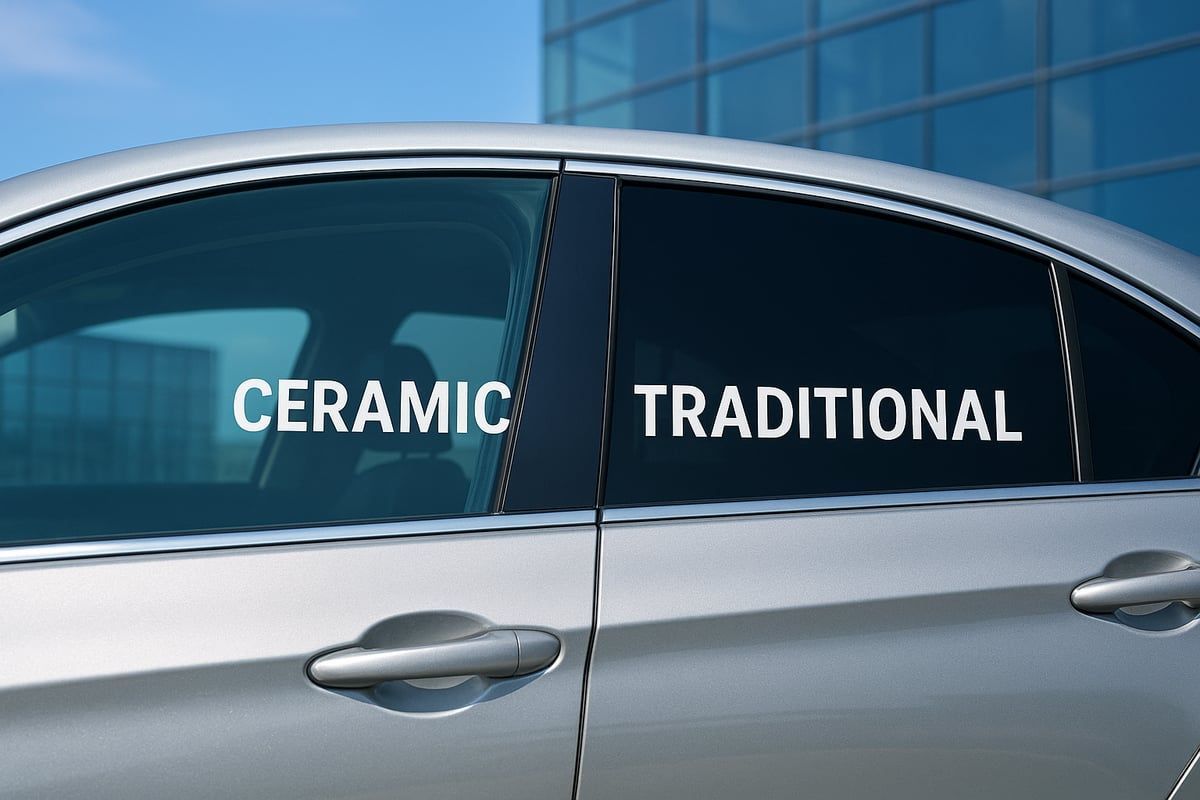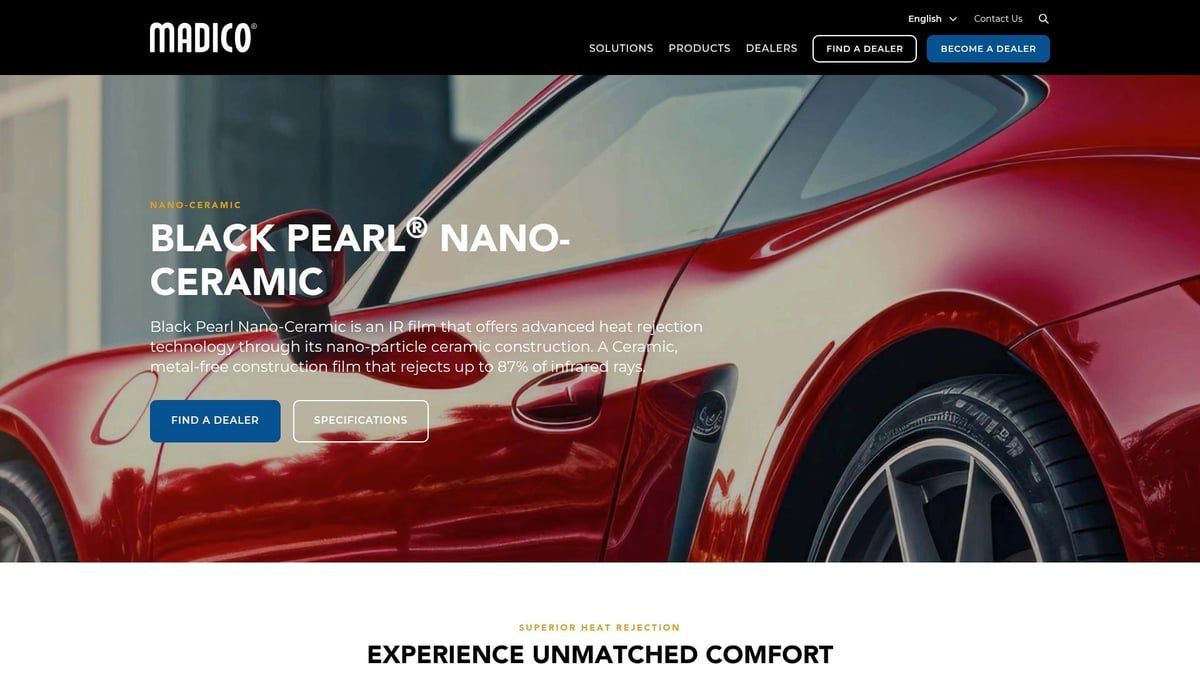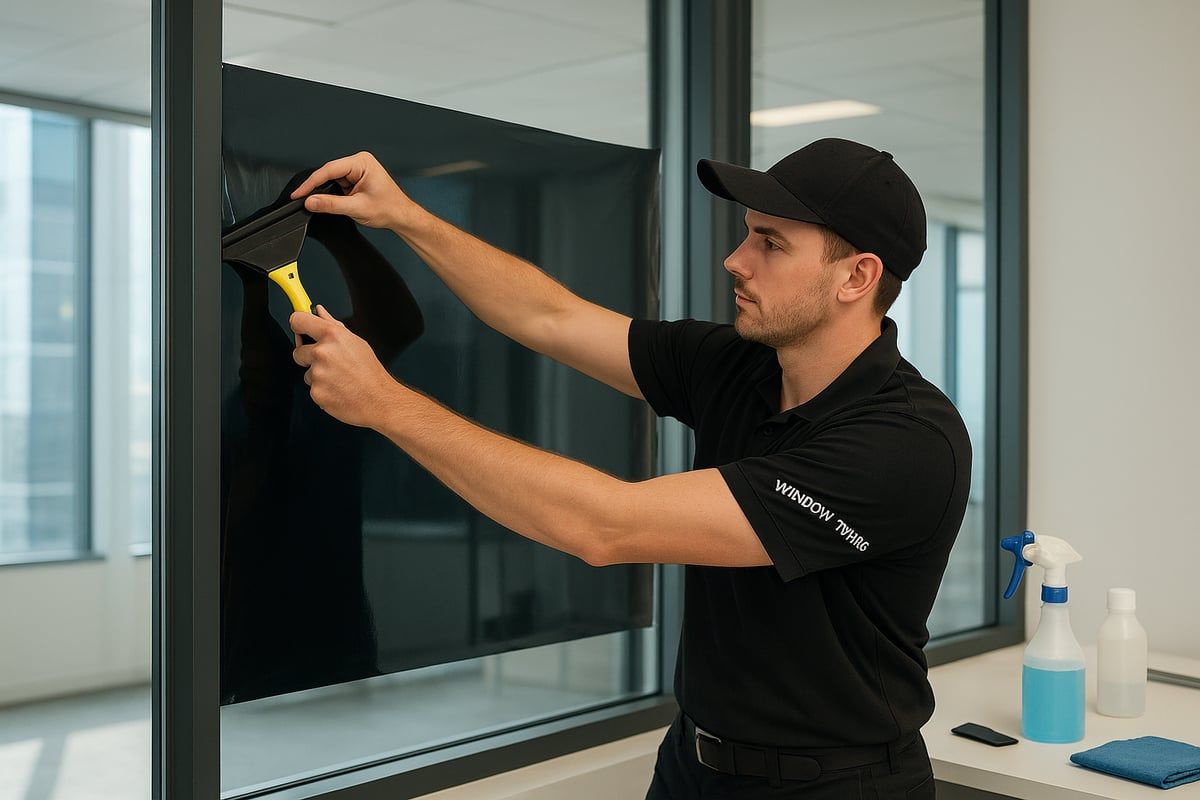The Essential Solar Guard Tinting Guide
The Essential Solar Guard Tinting Guide
Discover why 2025 is the pivotal year to consider solar guard tinting for your property. As rising energy costs and growing climate concerns shape our choices, advanced tinting solutions have become more important than ever.
This guide explores the latest in solar guard tinting, from breakthrough technologies and key benefits to practical selection criteria and expert installation advice. Learn how these innovations protect interiors, lower bills, and create a more comfortable environment.
With real-world data, examples, and step-by-step recommendations, you will gain the insight needed to choose and install the best solar guard tinting for your needs in 2025.
The Evolution of Solar Guard Tinting: What’s New in 2025?
The world of solar guard tinting is rapidly transforming in 2025, driven by technological innovation, stricter regulations, and shifting consumer priorities. Staying informed about these changes is essential for anyone considering an upgrade or new installation this year.
Major Technological Advancements
2025 marks a breakthrough year for solar guard tinting technologies. Nano-ceramic and spectrally selective films are now standard, offering exceptional clarity while blocking up to 99.9% of UV rays and 85% of infrared heat. These films allow for high visible light transmission, so spaces remain bright without sacrificing protection.
Smart tinting solutions have also arrived. Adjustable and self-tinting films adapt to sunlight throughout the day, optimizing comfort and energy efficiency. Many products now integrate with smart home systems, enabling automated control for heat and light.
Durability is another highlight, with new scratch-resistant coatings and longer warranties. Eco-conscious consumers will appreciate that many films use recyclable materials and environmentally friendly manufacturing processes.
For a deeper dive into how these innovations work, visit Sun Control Window Film Solutions for detailed information on the latest sun control films.
TechnologyBenefit2025 StatNano-ceramic filmClarity, UV/IR blocking99.9% UV, 85% IR blockedSmart tintingAdjustable comfort, energy savingsAutomated controlScratch-resistant coatingImproved longevity10–20 year warrantiesEco-friendly materialsSustainability, recyclabilityReduced environmental impact
Regulatory Updates and Industry Standards
Solar guard tinting in 2025 is shaped by updated building codes and automotive regulations. Many jurisdictions now require higher visible light transmission for safety, especially in vehicles and public buildings. Compliance is no longer optional; it is a necessity for both new and retrofit installations.
ENERGY STAR and LEED certifications are increasingly important for commercial projects. These standards ensure solar guard tinting contributes to overall building efficiency and sustainability. Installations must also adhere to both state and federal tinting laws, which specify allowable darkness and reflectivity levels.
Recent data highlights that 2025 standards demand higher VLT values. This change means films must provide robust protection without excessively darkening glass. Industry leaders are responding by developing products that balance safety with high performance.
Certified installers play a vital role in ensuring compliance, offering documentation and support for regulatory requirements. Staying up to date with these standards protects both property value and occupant safety.
Market Trends and Consumer Preferences
Demand for solar guard tinting is surging across residential, commercial, and automotive sectors. Consumers are prioritizing energy efficiency, sustainability, and aesthetics in their window film choices.
Clear and nearly invisible films are especially popular, as they provide strong protection without altering the building's appearance. This trend appeals to homeowners and businesses seeking comfort and savings without compromising natural light or curb appeal.
Sustainability is at the forefront, with buyers favoring products made from recyclable materials. A notable case study reveals a 30% increase in residential solar guard tinting installations from 2023 to 2025, reflecting heightened awareness of energy costs and climate impacts.
Commercial property owners are also investing in tinting to improve tenant comfort, reduce operating expenses, and enhance security. These market shifts signal that solar guard tinting is no longer a luxury, but a strategic investment for long-term value.
Key Benefits of Solar Guard Tinting
Advanced solar guard tinting offers a host of benefits for homes, offices, and vehicles. As technology and consumer needs evolve, these films provide more than just shade—they bring measurable improvements to energy use, health, comfort, privacy, and sustainability.
Energy Efficiency and Cost Savings
One of the most significant advantages of solar guard tinting is its ability to cut energy costs. By blocking up to 85% of infrared heat, these films help maintain cooler indoor temperatures, reducing the need for air conditioning. This translates into annual cooling cost savings of up to 30% for many properties.
Office buildings have reported yearly savings exceeding $1,000 after installing solar guard tinting. Improved HVAC efficiency leads to a lower carbon footprint as well. According to Energy Efficient Window Coverings, window films can play a crucial role in overall energy management for both residential and commercial spaces.
UV Protection and Health Benefits
Solar guard tinting blocks up to 99.9% of harmful UV rays, safeguarding the health of occupants and the integrity of interiors. Exposure to UV radiation can cause skin damage and increase the risk of skin cancer. By significantly reducing UV penetration, solar guard tinting helps protect against these health risks.
Additionally, the films prevent fading and deterioration of furniture, flooring, and artwork. Data shows that properly applied tinting extends the lifespan of interior furnishings and reduces maintenance costs. For families and businesses, this layer of protection is both a health and financial asset.
Glare Reduction and Comfort Enhancement
Glare from sunlight is a common problem in homes, offices, and vehicles. Solar guard tinting is engineered to minimize glare on screens and workspaces, improving visual comfort and productivity. Whether you are watching TV, working on a computer, or driving, reduced glare results in a more comfortable environment.
Schools have reported fewer complaints about classroom glare after installing solar guard tinting. The films maintain natural light while reducing eye strain and headaches. This makes them an excellent solution for any setting where comfort and focus are priorities.
Privacy and Security Improvements
Privacy during daylight hours is another key benefit of solar guard tinting. The films allow natural light to enter while obscuring outside views, making them ideal for residential, commercial, and automotive applications. Enhanced privacy does not come at the expense of openness or brightness.
Security is also improved, as many solar guard tinting films reinforce glass against break-ins and severe weather. Security films are designed to deter smash-and-grab thefts in retail environments and provide added protection during storms. These features make solar guard tinting a practical choice for safety-conscious property owners.
Environmental Impact and Sustainability
Solar guard tinting supports sustainability by reducing the reliance on air conditioning and fossil fuels. Many modern films are produced using recyclable materials, aligning with green building standards and eco-friendly initiatives.
A key environmental benefit is the reduction of carbon emissions, with solar guard tinting lowering a building’s emissions by up to 15%. As demand for energy-efficient solutions grows, choosing solar guard tinting contributes to a healthier planet and long-term cost savings. The combination of performance and environmental responsibility makes it a forward-thinking investment.
How to Choose the Right Solar Guard Tint for Your Needs
Selecting the best solar guard tinting for your property in 2025 requires a blend of technical knowledge and clear priorities. With evolving technologies and a wide range of options, making the right choice can feel overwhelming. The following guide breaks down the decision process into manageable steps, ensuring you find the ideal fit for your needs.
Assessing Your Goals and Environment
Before choosing solar guard tinting, clarify your main objectives. Are you most concerned about energy savings, UV protection, privacy, or aesthetics? Each goal may require a different approach.
- Identify if your space is residential, commercial, or automotive.
- Evaluate window orientation. South and west-facing windows typically demand higher heat rejection.
- Consider local climate and sun exposure levels.
- Factor in the presence of children, pets, or sensitive furnishings.
If you are focused on residential applications, the Residential Window Tinting Guide offers deeper insights tailored to homeowners.
Assessing these factors will help you align your solar guard tinting choice with your daily environment and long-term comfort.
Understanding Tint Types and Performance Ratings
Solar guard tinting comes in several types, each offering unique benefits. Understanding the technical ratings is crucial for an informed decision.
Film TypeHeat RejectionUV ProtectionAppearanceDurabilityNano-CeramicVery HighUp to 99.9%Nearly invisibleExcellentMetallicHighUp to 99%Slightly reflectiveVery goodDyedModerateUp to 95%Tinted lookGoodHybridHighUp to 99%BalancedVery good
Key performance metrics to compare:
- Visible Light Transmission (VLT): Higher VLT means more natural light.
- Total Solar Energy Rejection (TSER): Indicates overall heat blocking.
- UV Rejection (UVR): Measures protection against UV rays.
- Infrared Rejection (IRR): Reflects ability to reduce heat from sunlight.
Nano-ceramic films are increasingly popular for solar guard tinting, as they provide high heat rejection without darkening your windows.
Comparing Brands and Product Lines
Choosing the right brand is just as important as selecting the film type. Reputable manufacturers offer a range of products, warranties, and support.
Leading brands in solar guard tinting include:
- Solar Gard: Known for clarity and high performance.
- 3M: Offers advanced technology and robust warranties.
- Llumar: Popular for commercial and residential applications.
- SunTek: Valued for affordability and solid protection.
When comparing, review:
- Warranty terms and coverage length
- Product clarity and color stability
- Installation support and certified installer networks
For instance, Solar Gard’s Ultra Performance series is highly rated for both clarity and heat control, making it a strong choice for demanding environments.
Cost Considerations and ROI
Budget is a significant factor in solar guard tinting decisions. While upfront costs can vary, long-term energy savings often offset the investment.
Average installed cost in 2025: $6–$12 per square foot. Consider the following factors:
- Larger windows or specialty films may increase costs.
- Professional installation typically carries a higher price, but delivers better results.
Sample ROI Calculation: If your annual cooling bill is $3,000, and solar guard tinting reduces costs by 30%, you save $900 each year. With a $3,000 installation, your payback period is just over three years.
Balancing upfront investment with expected savings ensures your solar guard tinting delivers real value.
Professional vs. DIY Installation
The final step is deciding between professional or DIY installation. Each option has unique pros and cons.
Professional Installation
- Guaranteed workmanship and warranty protection
- Access to high-end films and expert advice
- Faster, cleaner results
DIY Installation
- Lower initial cost
- Greater flexibility in scheduling
- Higher risk of bubbles, peeling, or voided warranties
According to recent data, 80% of property owners prefer professional solar guard tinting installation to ensure long-lasting performance and manufacturer-backed support.
By weighing these options, you can confidently select the installation method that best fits your needs and budget.
Step-by-Step Guide: Solar Guard Tinting Installation Process
Upgrading with solar guard tinting in 2025 is a smart investment, but the results depend on following a precise installation process. Whether you are a property owner, facility manager, or installer, knowing each step will help ensure quality, longevity, and maximum benefits.
Step 1: Site Assessment and Measurement
Every successful solar guard tinting project begins with a thorough site assessment. Start by evaluating the type, size, and orientation of all windows. Identify problem areas, such as rooms that experience excessive heat, glare, or UV exposure during the day.
Create a checklist to note:
- Window dimensions and shapes
- Direction each window faces
- Existing glass type and condition
For commercial installations, energy audits are often performed to pinpoint where solar guard tinting will deliver the most value. Proper measurement ensures the right amount of film is ordered, minimizing waste and keeping the project on schedule.
Step 2: Selecting the Appropriate Film
Choosing the right solar guard tinting film is crucial. Match the film type to your building’s needs and local codes. Evaluate samples for clarity, performance, and aesthetics.
Key considerations include:
- Heat rejection and UV blocking ratings
- Visible light transmission (VLT)
- State and local tinting regulations
Commercial clients, especially, should consider options recommended by experts. For an in-depth look at performance and energy efficiency in office settings, consult Office Window Film Insights. Selecting the correct film ensures optimal comfort and compliance with safety standards.
Step 3: Preparing the Surface
A flawless solar guard tinting application depends on meticulous glass preparation. Begin by cleaning each window with a mild, ammonia-free solution and a lint-free cloth to remove dust, debris, and oils.
Check for and repair any chips or cracks, since imperfections can cause film adhesion problems later. Create a dust-free environment by using drop cloths and closing nearby vents. This reduces the risk of bubbles and improves the final appearance.
A clean, smooth surface is vital for the film to bond properly and deliver all intended benefits of solar guard tinting.
Step 4: Cutting and Shaping the Film
Once surfaces are prepped, measure and cut the solar guard tinting film precisely for each window. Use a sharp utility knife, straight edge, and professional cutting tools for accuracy.
For complex or nonstandard window shapes, digital templates or computer-guided cutters are recommended. This technology reduces waste and ensures uniformity, especially for large commercial projects.
Table: Essential Tools for Cutting
ToolPurposeUtility KnifePrecise cuttingMeasuring TapeAccurate dimensionsSqueegeeSmooth film applicationCutting MatProtect surfaces
Proper cutting and shaping prevent gaps or overlap, allowing solar guard tinting to perform optimally.
Step 5: Application and Squeegeeing
Apply the solar guard tinting film using a slip solution, which allows precise positioning on the glass before bonding. Gently lay the film onto the surface, starting from one edge, and smooth it outward.
With a professional-grade squeegee, remove air bubbles and excess solution, working from the center to the edges. Repeat this process for each window, checking for trapped debris or misalignment.
For those interested in the broader benefits of window film, including energy efficiency, the Energy Savings with Window Films resource offers valuable insights. Proper application maximizes the film’s performance and ensures a seamless, professional finish.
Step 6: Drying and Curing
After installation, allow the solar guard tinting film to dry and cure. Depending on climate and humidity, this process can take between two and four weeks.
During curing:
- Avoid cleaning or touching the film
- Keep windows closed when possible to prevent dust
- Watch for early signs of bubbles or edge lifting
Proper curing is essential for longevity. Rushing this stage can compromise adhesion and reduce the durability of solar guard tinting.
Step 7: Post-Installation Inspection and Maintenance
Once cured, inspect every window for defects, bubbles, or misalignment. Address any issues immediately, as early correction prevents long-term problems.
Provide maintenance guidelines to occupants:
- Clean with soft cloths and mild soap
- Avoid abrasive cleaners
- Register the warranty for support
Routine care will keep solar guard tinting clear and effective for years. Regular inspections and prompt attention to issues ensure the investment delivers ongoing comfort, protection, and energy savings.
Maintenance, Longevity, and Troubleshooting Solar Guard Tinting
Proper maintenance is crucial to ensure your solar guard tinting delivers long-lasting performance and value. By following recommended care routines and recognizing signs of wear early, you can extend the life of your window films and protect your investment. This section covers essential cleaning tips, longevity strategies, troubleshooting, and when to upgrade or seek professional help.
Routine Cleaning and Care
Routine maintenance is the first step in protecting your solar guard tinting. Begin by using a soft microfiber cloth and a mild soap solution to gently clean the tinted surface. Avoid any ammonia-based cleaners, as these can degrade the tint and lead to discoloration or peeling.
It is best to clean your windows quarterly for optimal clarity and performance. Always use gentle, circular motions and never use abrasive tools or harsh chemicals. This approach not only maintains the appearance of your solar guard tinting but also preserves its protective properties over time.
For best results, follow these tips:
- Rinse windows with clean water before applying soap
- Dry with a lint-free cloth to avoid streaks
- Inspect edges regularly for early signs of wear
By adopting these simple practices, you help your solar guard tinting remain effective for years to come.
Maximizing Film Longevity
Several factors influence the lifespan of solar guard tinting, including climate, film type, and exposure to sunlight. High-quality films installed in moderate climates often last longer, with 2025 advanced films offering warranties from 10 to 20 years.
To maximize longevity, keep windows shaded when possible and avoid physical damage from pets or furniture. Regular inspections help catch issues before they become serious. According to a recent Evaluation of Window Films on Indoor Environment and Energy Consumption, proper care and installation can significantly improve both lifespan and energy savings.
Commercial installations have demonstrated durability, often exceeding 15 years when maintained correctly. Investing in professional-grade solar guard tinting supports long-term performance and cost savings.
Recognizing and Addressing Common Issues
Over time, solar guard tinting may show signs of wear such as bubbling, peeling, or discoloration. Bubbling can result from moisture trapped during installation or from harsh cleaning chemicals. Peeling typically signals aging adhesive or improper surface preparation.
If you notice these symptoms, act quickly. Small bubbles might be smoothed out with gentle pressure, but larger issues may require professional attention. For persistent discoloration, replacement is usually the best option.
Common troubleshooting steps include:
- Inspecting for loose film edges
- Avoiding further cleaning until assessed
- Contacting a certified installer for repairs
Addressing problems early helps maintain the integrity of your solar guard tinting and prevents further deterioration.
Upgrading or Replacing Old Tinting
Knowing when to upgrade your solar guard tinting is key to maintaining efficiency and aesthetics. If your film is over a decade old, visibly damaged, or does not meet current regulations, consider replacement. Upgrading to 2025 advanced films can improve energy efficiency by up to 25% compared to older products.
New films offer enhanced UV protection, better clarity, and improved heat rejection. As detailed in the End-Use Savings Shapes Measure Documentation: Window Film, modern solutions provide measurable reductions in energy use and emissions.
Upgrading ensures compliance with evolving standards and maximizes the return on your investment in solar guard tinting.
Professional Support and Warranty Claims
Choosing certified professionals for installation and repairs is essential to protect your solar guard tinting warranty. Most leading brands require professional installation to validate coverage. If you experience issues, start by reviewing your warranty documentation and contacting the installer.
The claim process typically involves:
- Documenting the problem with photos
- Submitting a claim form to the manufacturer or installer
- Scheduling an inspection or repair appointment
Responsive customer service and warranty support help ensure your solar guard tinting continues to perform as intended. Always select experienced, reputable providers for peace of mind and long-term satisfaction.
As you think about the future of your home or business, it's clear that advanced solar guard tinting is more than just a trend—it's an essential upgrade for energy efficiency, UV protection, and peace of mind in 2025. You deserve the comfort, security, and savings that come from expertly installed window films. If you're ready to take the next step, let trusted professionals guide you through the process and help you choose the perfect solution for your needs. Your space—and everyone in it—will thank you.
Get Protected Today










